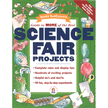What Are the Variables in “Float a Needle” from “Science Wizardry for Kids” by Margaret Kenda.
“Floating a Needle” is an exploratory investigation about surface tension.
Surface tension is the property of liquids in which the exposed surface acts as if a thin skin has been pulled across it. This property is due to the cohesion (attractive forces) of like molecules.
Water has a very high surface tension because it of its strong cohesive forces.
For more information about the relations between cohesion and surface tension, see Cohesion: Surface Tension.
In this investigation, a metal sewing needle, tap water, paper towel, and a bowl will be needed.

Purpose: To determine if the surface tension of tap water is strong enough for a metal sewing needle to float on it.
1. Fill a small bowl with tap water.
2. Float a piece of paper towel about 4 cm square on the surface of the water.
3. Gently place a metal sewing needle in the middle of the paper.
4. Carefully push the edges of the paper down into the water. As the paper gets wet, it will sink and leave the needle floating. (This happens if the surface tension of the water is great enough to support the weight of the needle.”
5. Look back at each procedure step of the experiment, and then list variables (things that could be changed). I have listed the variable for you so that you will know how to identify variables in future investigations.
Step 1: size of the bowl, type of water
Step 2: type of paper, size of paper, use no paper
Step 3: type of object to be floated, size of the needle
5. For each one of the procedure steps, ask yourself questions, such as these:
Step 1: Would changing the size of the bowl affect the results of the experiment?
Would changing the type of water affect the results of the experiment? Try distilled water or salt water, soapy water.
Step 2: Would changing the type of paper affect the results of the experiment?
Would changing the size of the paper affect the results of the experiment?
Would not using paper affect the results of the experiment
Step 3: Would changing the type of object to be floated affect the results of the experiment?
Would changing the size of the needle affect the results of the experiment?
6. Pick one of the questions from the previous instruction step that most interest you. My choice is:
Step 1: Would changing the type of water affect the results of the experiment?
7. Use the selected question to develop your Science Fair Project.
First: Check the rules –do you have to have an experimental investigation with measurable results? Or, would a comparison investigation or even a model be acceptable?
THE FOLLOWING EXAMPLE IS FOR AN EXPERIMENTAL INVESTIGATION
Experimental investigations must have two variables–
1. independent variable: Something that you choose to change. For my selected question, the independent variable is the type of water.
2. dependent variable: Something that changes in response to changing in the independent variable. What could change if the type of water was changed? The needle floats because of the surface tension of distilled water. If you change the type of water then possibly the surface tension would change. So, surface tension is the dependent variable.
The Science Fair Project Question could be:
What effect does the type of water have on its surface tension?
8. So, what do you think? Will using different kinds of water affect its surface tension? How can you change the water? Adding salt to distilled water to make it more like ocean water? Using tap water from different sources?
Your guess about the answer is called your hypothesis, and it can be written like this:
If chemicals are added to distilled water, the surface tension of the water (increases? decreases?)
9. Experiment using the original procedure except repeat the experiment with each type of water you wish to test.
10. Control–For this example, I suggest that the control be to perform the experiment using distilled water. Then, all other tests results would be compared to this control.
Use search engine on this website for information about Collecting and Analyzing Data, Conclusion and Displaying information.
Use ASK JANICE on the Navigation bar at the top of the page to contact me with questions about your project.
 |
Janice VanCleave’s Guide to More of the Best Science Fair ProjectsThe first section of this book gives detailed, step-by-step instructions on how to design and develop a science fair project.The second section gives examples of exploratory investigations that can be developed into a science fair project. |